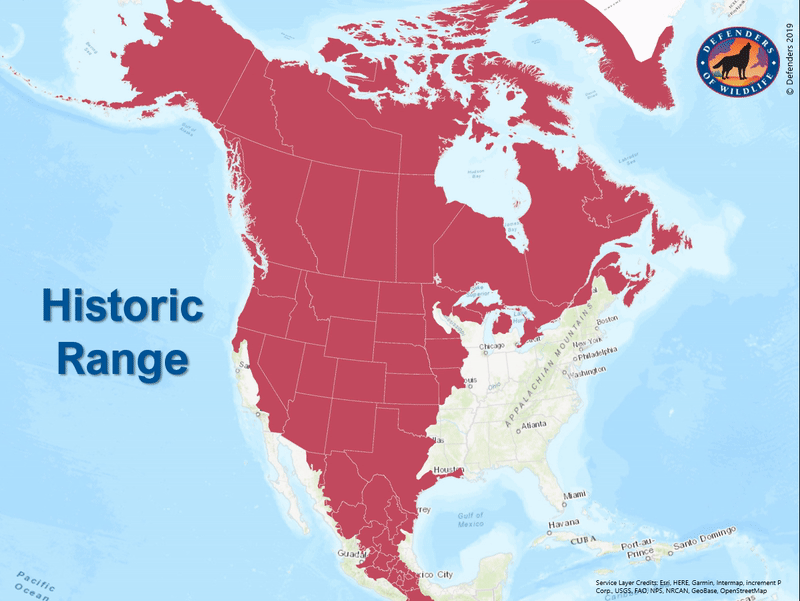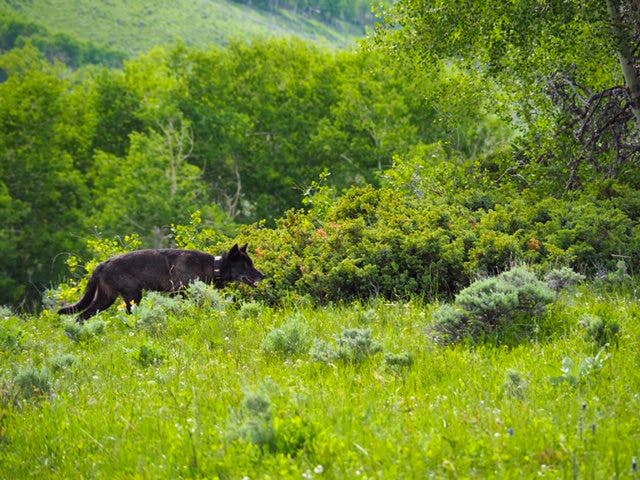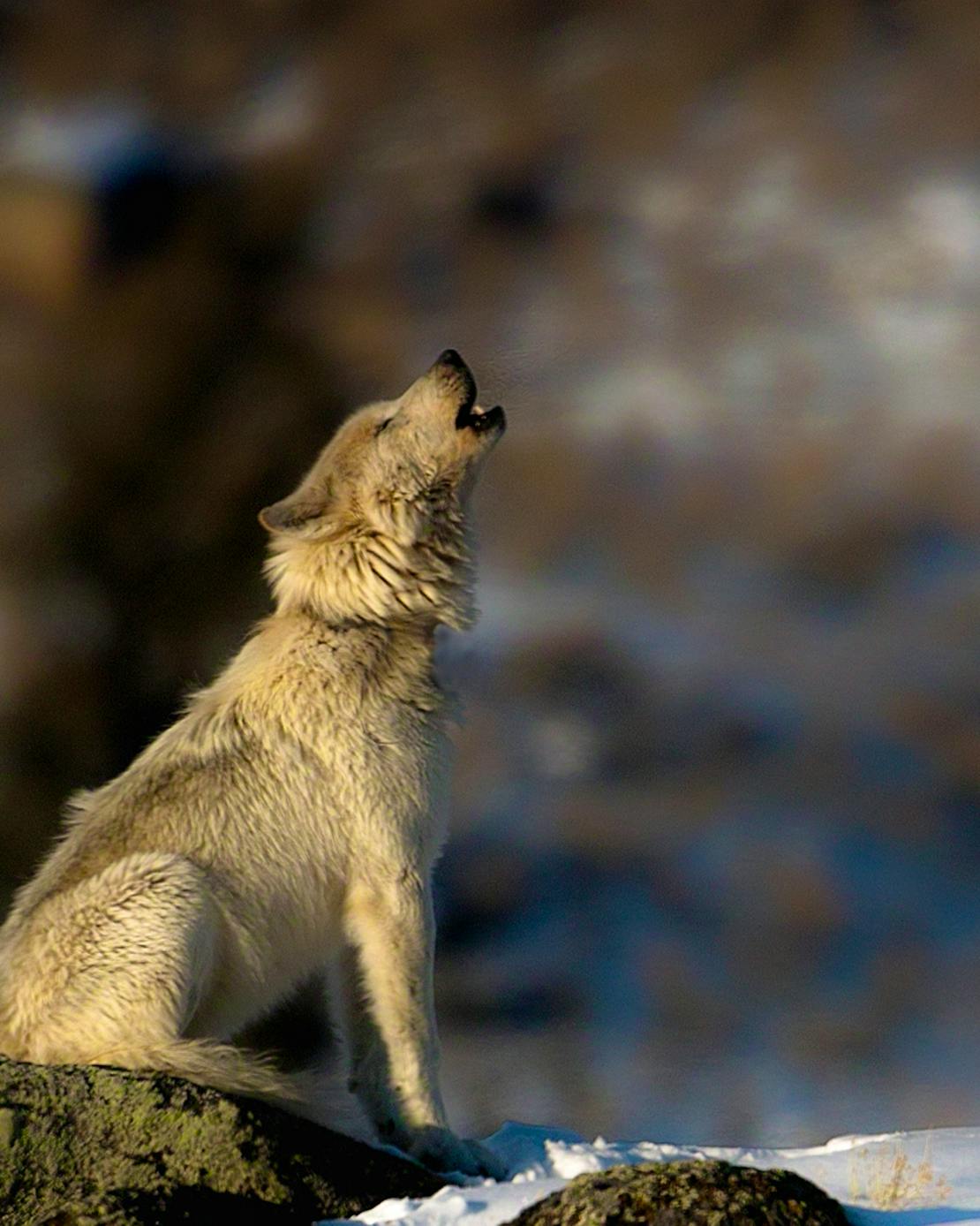History
Though wolves were once one of North America’s most broadly distributed large mammals, European colonization, westward expansion, and systematic killing quickly pushed wolves towards the brink of extinction. By the 1930s, wolves were nearly eradicated from the Lower 48 and the known wolf population in the continental U.S. plummeted from estimates of several hundred thousand to only a few hundRed Wolves in northern Minnesota.
But 25 years ago, gray wolves were restored to Yellowstone National Park and to the Frank Church-River of No Return Wilderness of central Idaho. This reintroduction was a breakthrough in conservation and the benefits of having this keystone species on the landscape are on full display in the ecosystems of the northern Rockies.
As wolves have returned, the age-old conflicts that led to their demise have also re-emerged. The most significant conflicts are based on fear of livestock losses, even though in the last two decades, less than one percent of livestock losses were due to wolves. The greatest challenge now is to build acceptance and appreciation for wolves, which Defenders strives to do by bringing people together to learn how to live with this magnificent, native species once again.
Coexistence
Defenders has extensive experience in coexistence – promoting and implementing effective nonlethal tools and techniques to reduce conflicts between wildlife and livestock throughout the country. Because wolves are fearful of humans, an active human presence on the range can be invaluable. Range riders patrol where livestock graze, deter predators and keep tabs on the herd to ensure its health and well-being. In addition, by training mother cows to stay with their calves and to find security in the herd when threatened, we are rekindling the wild instincts of our cattle; instincts which keep them safer from predators. Tools include the use of specialized fencing called fladry, randomized strobe lights like Foxlights, and noise makers to discourage wolves from getting too close to livestock. While these tools are proven to be effective in minimizing predator-livestock conflict, nothing can replace good livestock husbandry practices. More information on these strategies to reduce conflicts can be found in Defenders’ own Livestock and Wolves: Guide to Nonlethal Tools and Methods to Reduce Conflicts.

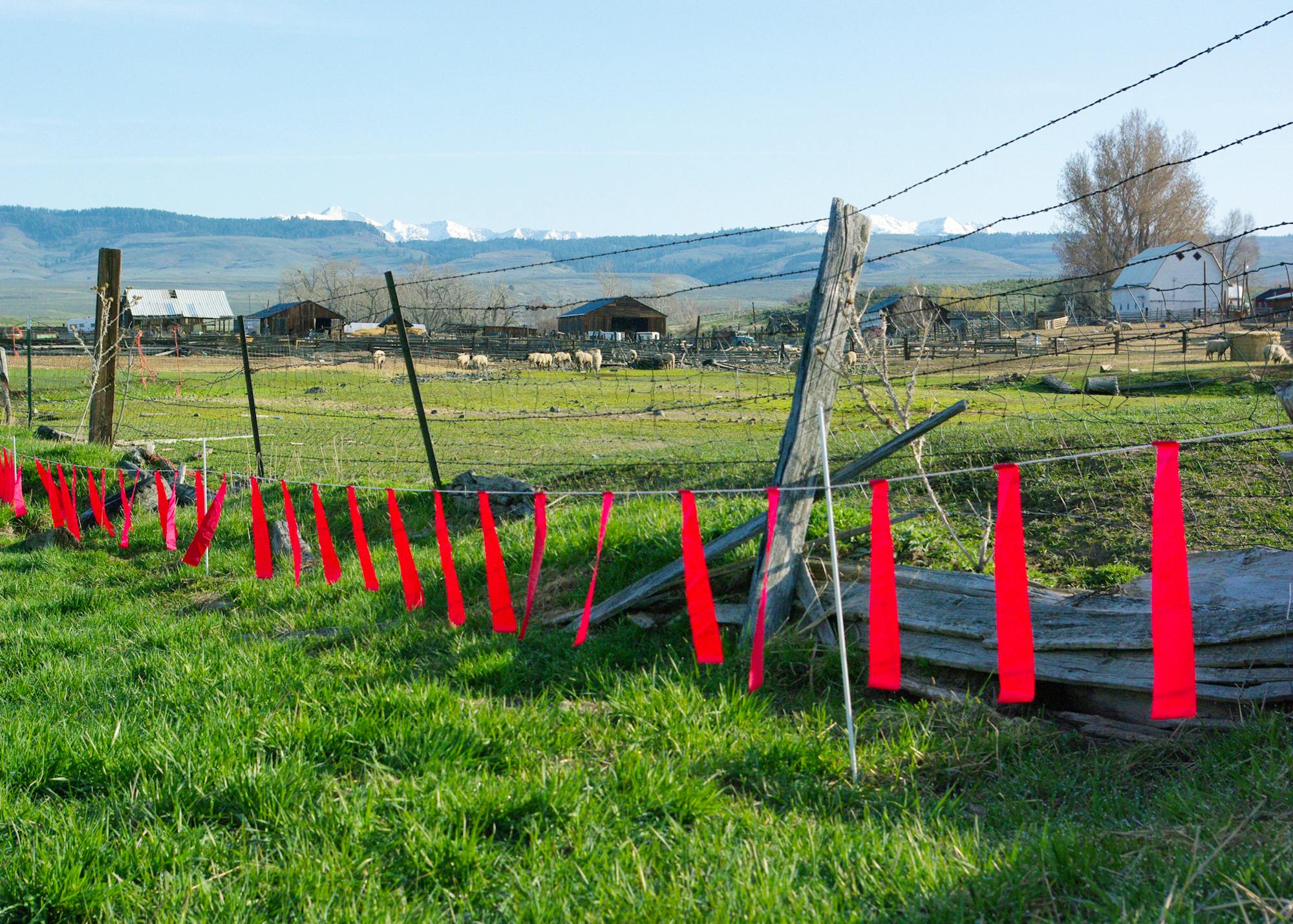

We work with ranchers and landowners to minimize wolf-livestock interactions through the training of these techniques and the use of nonlethal tools that encourage wolves to select their natural ungulate prey of deer and elk instead of domesticated livestock. We host workshops to give ranchers as many options as possible to keep their livestock safe; we don’t want to see livestock killed because of wolves and we don’t want to see wolves persecuted due to conflicts with livestock.
Pacific Northwest
A pack with pups was confirmed in July 2008 in northeastern Washington, representing the first fully documented breeding by wolves in the state since the 1930s. A year later, gray wolves marked their return to Oregon when the first pack was officially recognized in northeastern part of the state. Over the next decade, wolves began to return to their historical territory and slowly disperse to other parts of the Pacific Northwest and California. The population is on an upward trend, but anti-wolf sentiments that threaten wolves’ continued recovery still run high.
Defenders works closely with a wide variety of partners – state fish and wildlife agencies and commissions, elected officials, ranchers, recreationists, activists, and other conservation organizations – to advocate for policies and practices that will ensure continued wolf recovery. Washington has begun the process to update its wolf plan in anticipation of wolf delisting and Defenders is already working hard to make sure that the plan is based on the best available science and prioritizes nonlethal methods of reducing wolf-livestock conflicts.
We complement our policy work by working directly with communities sharing the landscape with wolves. Defenders seeks to engage new and diverse audiences in our coexistence work, and we convene workshops with community partners to share information about wolf-livestock conflict deterrence methods and to facilitate meaningful and transformative conversations about coexistence. We also provide direct assistance in wolf-livestock conflict hotspots by working with landowners to assess their needs and install and maintain a variety of conflict deterrence tools.
The Blue Mountain Wolf Project is an active wolf and livestock coexistence demonstration model in northeast Oregon that employs sheepherders from Peru. Defenders organized a bi-lingual training workshop in the project area, engaging Peruvian herders from our collaborative wolf coexistence effort, the Wood River Wolf Project in Idaho, to train the Peruvian sheepherders in Oregon in effective nonlethal methods to protect sheep. These experienced herders and managers primarily conducted the workshop in Spanish for the new herders, and it was translated in English for the wildlife managers from Oregon Department of Fish and Wildlife, USDA Wildlife Services Oregon staff, local livestock managers and wildlife advocates.
California
In late December 2011, a young male wolf from Oregon known as OR-7 made history when he entered California, making him the first known wild wolf in the Golden State in nearly 90 years. In the summer of 2015, the California Department of Fish and Wildlife (CDFW) shared the news that the state’s first resident wolf family, dubbed the Shasta Pack for the massive dormant volcano near where they were discovered, had settled into eastern Siskiyou County. In summer 2017, CDFW announced the presence of the Lassen Pack, which has had pups each spring since then, and is currently the only known family of wolves in California.
Defenders works with USDA Wildlife Services and CDFW to provide conflict reduction tools to landowners and livestock managers and help deploy them in areas where wolves and livestock overlap, which has been incredibly successful in reducing unwanted encounters. Just two weeks ago, we helped install turbofladry on private land in Lassen County with these partners. Requests for assistance with coexistence strategies have been steadily increasing over the past few years, and Defenders is answering the call by working on the ground with livestock producers and our agency partners to help keep both livestock and wolves safe from harm in northern California.

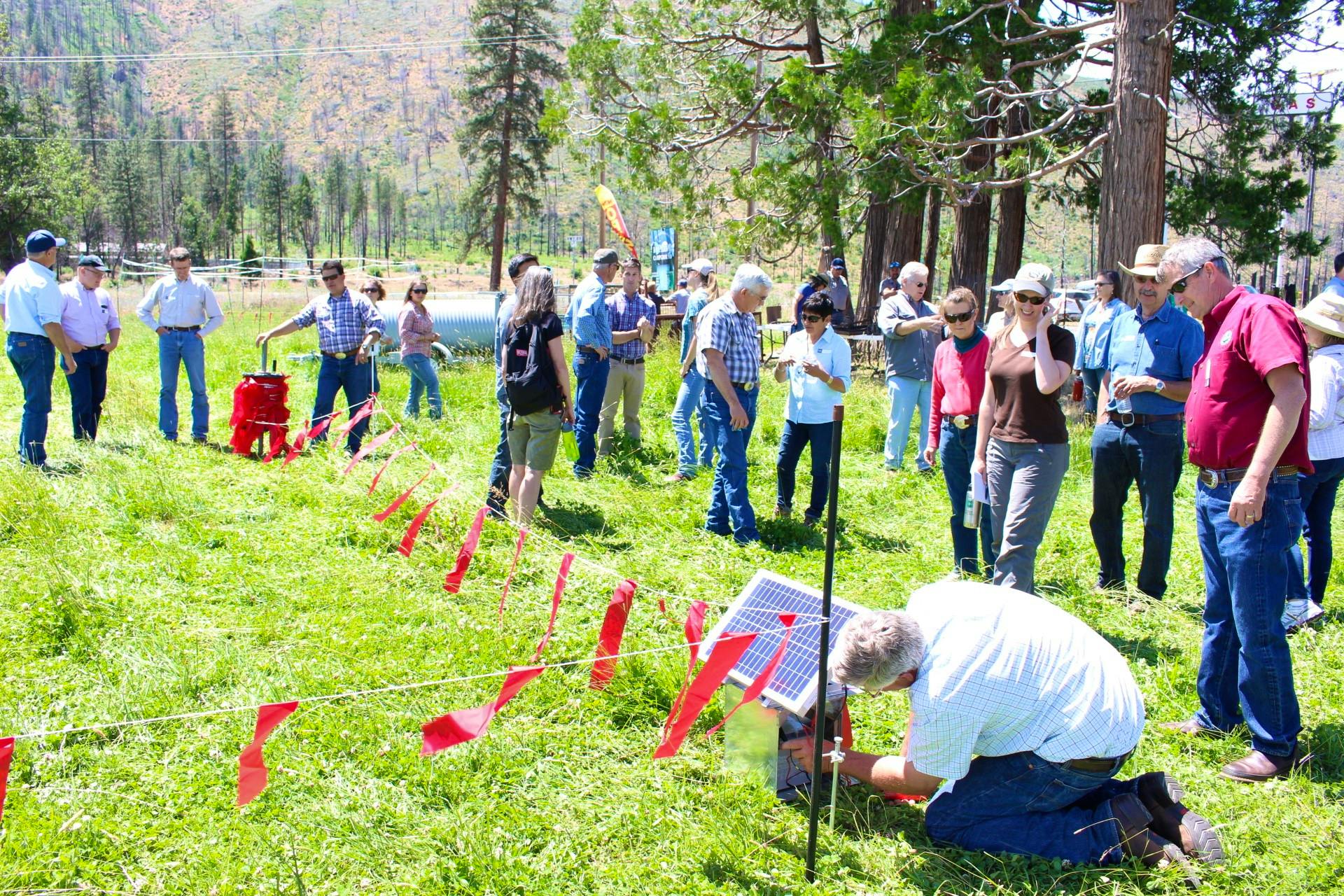
The Next Frontier: Colorado
This summer, a lone male from the Snake River pack in Wyoming made his way to Colorado, a state without a wolf population for over 70 years. Habitat connectivity for wolves, as for many other species, remains a challenge and except for a few adventurous wanderers who make it out of protected areas and through hostile states like Wyoming, there are no resident wolves in Colorado.
Defenders is working to change that. For decades, polling has indicated that Coloradans want wolves. The Centennial State remains a missing piece in connecting wolf populations from Canada to Mexico. This year, Defenders of Wildlife joined the Rocky Mountain Wolf Action Fund in an effort to reintroduce gray wolves to Colorado through a ballot measure and we’ve begun the process to enable Coloradans to vote on a referendum directing Colorado Parks and Wildlife to begin the planning process for wolf reintroductions to the state by 2023.
Of course, physically returning wolves to Colorado is only a small part of our recipe for success. Whether they cross into the state on their own or are actively reintroduced, the people of Colorado want to be sure they can successfully coexist with wolves. That’s why our efforts to promote nonlethal tools and techniques continue in Colorado. We are working to share these concepts with our ranching partners throughout the state and to prepare for the presence of wolves before they arrive. By connecting with people working on the ground, we are developing relationships necessary for cooperation and giving livestock producers the tools they need to succeed in a landscape restored with one of its native predators.
With the largest elk herd in the lower 48 and a robust population of deer, Colorado has ample prey and habitat to sustain wolves. With state residents adding to that support, we are well on our way to seeing wolf restoration in Colorado, but success hinges on our relationships and our ability to work together.
A single disperser in Colorado is cause for excitement, but it is a bittersweet discovery, as this individual will likely not be able to find a mate or have pups. However, the same thing was said about OR-7 before he sired 17 pups, some going on to form their own packs. Anything is possible, and Defenders is ready to support wolves and the people coexisting alongside them in all states as they return to the landscapes they once called home.

